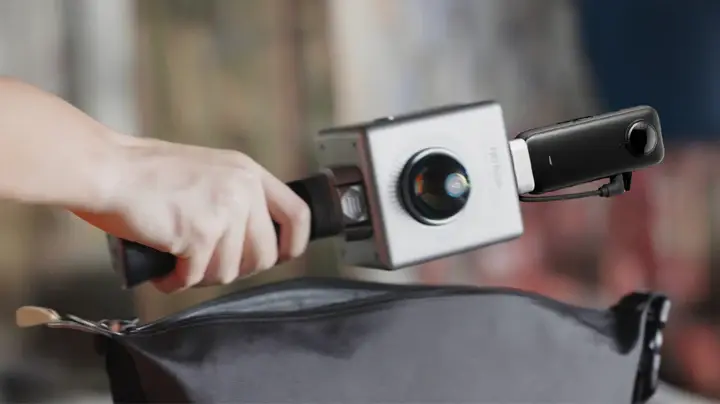In today’s world of 3D data acquisition, scanning technologies are essential for many industries, including construction, urban planning, archaeology, and surveying. Two of the most commonly discussed technologies are LiDAR scanners and 3D scanners. While they might seem similar at first glance, understanding their differences is key to choosing the right tool for your needs. This guide focuses on handheld LiDAR scanners and explains why they stand out compared to other types of 3D scanners and laser scanners.

Understanding 3D Scanners
3D scanners are devices designed to capture the shape and dimensions of objects or environments in three dimensions. They come in various forms:
Discover more- Structured Light Scanners: These scanners project a series of light patterns onto an object and measure how the patterns deform to calculate the 3D shape.
- Photogrammetry: Uses multiple photographs taken from different angles to reconstruct a 3D model.
- Laser Scanners: Use laser beams to measure distances. Many laser scanners are capable of generating 3D point clouds, but not all of them automatically produce full 3D models. Their function can sometimes be limited to 2D mapping or simple distance measurement.
The key takeaway is that while laser technology can be used for 3D scanning, only devices designed for 3D output—like LiDAR scanners—guarantee 3D functionality. Other 3D scanners may focus on small object modeling or industrial inspection.

Discover the FJD Trion P1 3D Handheld LiDAR Scanner for fast, accurate 3D scanning. Portable and easy to use, it’s perfect for construction, architecture, and environmental projects. Buy it now from our website to start capturing professional-grade 3D data.
Understanding LiDAR Scanners
LiDAR, which stands for Light Detection and Ranging, works by emitting laser pulses and measuring the time it takes for the pulses to return after hitting surfaces. This process generates a dense 3D point cloud that accurately represents the scanned environment. Unlike some general laser scanners, all LiDAR scanners are inherently 3D scanners. They always capture three-dimensional spatial data, making them ideal for environmental and spatial scanning.
LiDAR scanners are known for:
Fast and efficient 3D data collection
High accuracy over large areas
The ability to scan complex environments with minimal setup
Contact usHandheld LiDAR Scanners
Handheld LiDAR scanners combine the advantages of LiDAR technology with portability. These devices allow users to capture high-precision 3D data anywhere, without being restricted to a fixed position. Features include:
- Compact laser sensors for precise 3D point cloud generation
- Real-time SLAM (Simultaneous Localization and Mapping) for immediate mapping
- User-friendly interfaces suitable for both professionals and enthusiasts
Handheld LiDAR scanners are ideal for capturing interior spaces, construction sites, outdoor environments, and even archaeological digs. Their flexibility makes them particularly appealing for users who need fast, accurate, and portable 3D scanning solutions.
Key Differences Between LiDAR and Other 3D or Laser Scanners
The simplest way to understand the difference is: all LiDAR scanners are 3D scanners, but not all 3D or laser scanners are LiDAR scanners. Key distinctions include:
- Guaranteed 3D Functionality: LiDAR scanners always output 3D point clouds. General laser scanners may or may not produce full 3D data.
- Purpose: LiDAR scanners excel at scanning environments and landscapes quickly, while structured light or photogrammetry scanners are often better for small objects or industrial components.
- Data Output: LiDAR produces dense point clouds suitable for modeling large areas, whereas other scanners may output meshes or only partial 3D data.
- Portability: Handheld LiDAR scanners are portable and can handle complex environments, which traditional large laser scanners may struggle with.
- Speed and Range: LiDAR can efficiently scan hundreds of meters, while other scanners are usually limited to smaller areas.
In short, LiDAR is about rapid, high-precision environmental 3D scanning, and other 3D scanners are about detailed modeling and small-scale precision.
Applications of Handheld LiDAR Scanners
Handheld LiDAR scanners are widely used across different fields:
- Construction and Architecture: Documenting existing building conditions and creating accurate digital models.
- Urban Planning: Mapping city layouts and infrastructure for design and planning purposes.
- Archaeology and Cultural Heritage: Preserving historical sites and artifacts digitally.
- Forensics: Reconstructing accident or crime scenes in 3D.
- Forestry and Environmental Monitoring: Measuring tree canopies, terrain, and landscape features efficiently.
The versatility of handheld LiDAR scanners makes them indispensable for professionals who need both speed and precision.
Choosing the Right Device
When selecting a scanning solution, consider:
- Project Scale: Large sites favor LiDAR, while small objects might be better suited for structured light scanners.
- Required Precision: High-resolution modeling may require specialized 3D scanners, but handheld LiDAR still provides excellent accuracy for most applications.
- Portability Needs: Handheld LiDAR scanners are ideal for environments where mobility is crucial.
- Budget: Handheld LiDAR scanners are an investment but can save time and resources in large-scale projects.
Understanding your project requirements will help determine whether a handheld LiDAR scanner or another type of 3D or laser scanner is more suitable.
Why Choose a Handheld LiDAR Scanner
Handheld LiDAR scanners allow users to:
- Move freely while scanning
- Obtain high-quality 3D point clouds in real time
- Reduce setup time compared to stationary scanners
- Scan both indoor and outdoor environments with high accuracy
For those looking to buy handheld LiDAR scanners, FJDynamics offers high-quality options designed to meet professional and enthusiast needs. Browse our selection to find a handheld 3D LiDAR scanner for sale that fits your project requirements.
Conclusion
To summarize: all LiDAR scanners are 3D scanners with guaranteed 3D functionality, while other laser or 3D scanners may or may not provide full 3D output. LiDAR is ideal for rapid, large-scale environmental scanning, and handheld models like the FJD Trion P1 combine precision, portability, and speed for versatile applications. For those interested in exploring the capabilities of handheld LiDAR technology, FJDynamics provides professional solutions ready for a variety of projects.
Our latest products
Check out what's new in our company !